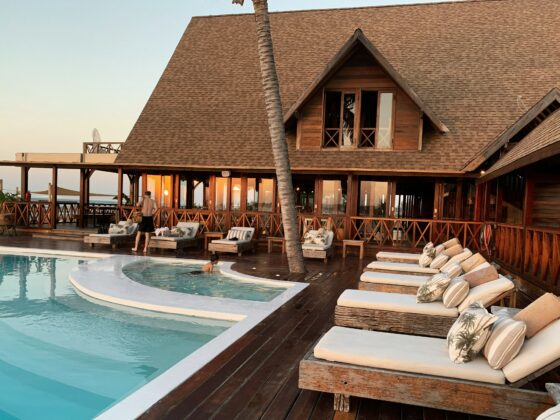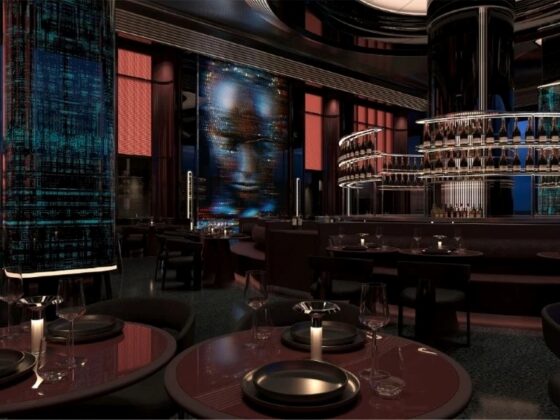The average length of stay (ALOS) is an essential metric for any hotel. It shows how long guests typically stay and has a direct impact on your revenue. In 2023, the average length of stay in Portuguese, French, and US hotels was 1.8 days. But this number is not one-size-fits-all; the Portuguese island Madeira, for example, hit an average of 4.5 days.
If your property’s average falls short of the national or regional benchmark, it’s worth reviewing your strategy. What can you do to encourage guests to stay longer? Extending stays doesn’t just boost your revenue – it also means happier, more engaged guests.
In this article, we’ll break down how to calculate the average length of stay, the key factors that affect it, and – most importantly – practical strategies you can use to increase it.
What is the average length of stay (ALOS) and how do you calculate it?
The average length of stay measures exactly what it sounds like – the average number of nights a guest stays at your hotel. Here’s how to calculate it.
The average length of stay calculation
Calculating the average length of stay is simple and can be done using the following formula:
Average length of stay = Total number of nights / Total number of bookings
If your hotel logs 1,000 room nights in a month and records 400 bookings, the average length of stay is calculated like this:
1 000 ÷ 400 = 2.5
The average stay at your hotel comes to 2.5 nights.
Why is the average length of stay a key indicator?
The length of a guest’s stay has a direct impact on your hotel’s bottom line. Longer stays mean you spend less on acquiring new guests and bring in more revenue per room.
Longer stays mean higher occupancy rates, steadier revenue, and happier guests. Guests staying multiple nights often have a better experience, making them more likely to leave positive reviews. It’s a win-win for your hotel and your visitors.
By tracking this indicator, you can fine-tune your offers, sharpen your marketing strategy, and gain a clearer understanding of your customers’ habits.
What factors influence the average length of stay?
Knowing the average length of stay in your region is important, but it’s only part of the picture when assessing your hotel’s performance. Factors like your hotel type, target guests, location, and seasonality all play a role in this metric. Before comparing your numbers to others, make sure you’re looking at hotels with similar profiles – this will give you a clearer idea of where you stand.
The type of hotel
The type of hotel has a big impact on the ALOS (Average Length of Stay) metric. For example:
- Business hotels: Often located near airports or city centres, these hotels attract travellers who usually stay for one or two nights.
- Resorts and holiday hotels: Offering longer stays (often between 4 and 7 nights), these establishments attract families and holidaymakers.
- Urban hotels and boutiques: The length of stay varies depending on the clientele but tends to be shorter.
- Ski resorts or seaside hotels: The high season often brings longer stays, with visitors taking advantage of specific seasons to extend their trip.
The location
The location of your hotel plays a big role in how long guests stay. A place near an airport or business hub? You’ll likely attract business travelers staying for just a night or two. A hotel in a popular tourist spot? Expect vacationers to stay around longer to explore. Hotels in prime locations with easy access to public transport or local attractions tend to see guests extending their stays. It’s all about catering to the needs of your target customer group and making the most of your location.
Seasonality
The time of year has a big impact on how long guests stay. During the high season, when more holidaymakers are around, the average stay tends to be longer. In the low season, this often changes, with shorter stays becoming more common. To keep guests around longer during quieter months, it’s worth offering special deals or packages that make their stay more appealing.
The client profile
The type of guests your hotel attracts plays a big role in booking patterns. Business travellers typically book shorter stays during the week, while families and tourists often prefer longer stays, especially when looking to relax. International visitors, who often spend more on travel, are also more likely to opt for extended stays to make their trip worthwhile. Understanding these preferences can help you plan and cater to your guests more effectively.
How to increase the average length of stay at your hotel?
Now that you’ve learned how to calculate your average length of stay and the factors that influence it, let’s explore how to improve it. No matter what type of property you manage, there are effective ways to encourage guests to stay longer. Here are 4 practical strategies to help boost your average length of stay and increase your revenue at the same time.
Offering incentives to extend the stay
If your guests tend to book shorter stays, one simple way to encourage longer visits is by offering discounts or added perks for extending their stay. Here’s how you can make it happen:
- Tiered pricing: For example, you can offer discounts starting from 3 consecutive nights.
- Special offers: You can also set up special deals, such as “4 nights for the price of 3”.
- Long-stay packages: Offer combined deals, such as nights and experiences, including spa access, local activities, or meals in your restaurant.
Expert tip
Propose strategic partnerships
Partnering with local agencies, travel organisers, or tourist attractions is a smart way to encourage guests to stay longer. Offer packages that include guided tours, excursions, or local product tastings to give them more reasons to extend their trip. You can also team up with nearby restaurants or museums to provide exclusive discounts. The idea is simple: make their stay more enjoyable and memorable, while driving more bookings for your business.
Improving the guest experience
Customer experience is a major factor when it comes to guests deciding to extend their stay. Simple options like late check-out or early check-in can make all the difference for those seeking extra comfort. Want to take it a step further? Offer automated online check-in, so guests can skip the reception desk and check in on their own terms. It’s practical, convenient, and makes life easier for everyone.
Personalised experiences, like recommendations tailored to your guests’ preferences, can boost satisfaction and keep them coming back. So how do you keep track of what they like? The “Contacts” menu on the HiJiffy platform stores all customer information in one dedicated profile, making it simple to access and use.
If a loyal guest always prefers a room with a king-size bed, why wait? Offer it to them straight away. Got a family with kids? Recommend a room near the pool or close to family-friendly activities. By anticipating guest preferences, you create a personalised experience that makes their stay more enjoyable – and increases the chances they’ll extend their visit or come back again.
Share local tips with your guests: provide guides, event info, or maps to encourage them to explore the area. It’s a simple way to make their stay more memorable while creating upselling opportunities to boost your revenue through added services.
Optimise your marketing campaigns
Encourage your guests to stay longer by fine-tuning your marketing strategy. Use email and WhatsApp campaigns and targeted ads to share special deals for extended stays. Show off glowing guest reviews that mention the benefits of staying longer, and update your website with tailored offers like discounts or exclusive packages for extended visits. By focusing on these practical steps, you’ll not only give your guests more reasons to stay but also drive more revenue for your hotel.
Hotel Marketing in 2025: The Complete Guide
Understanding and managing the average length of stay at your hotel is key to boosting both profitability and guest satisfaction. By pinpointing what impacts it and putting tailored strategies in place, you can encourage guests to stay longer. Ready to put these tips into action at your property? The next move is yours!
Subscribe to HiJiffy Newsletter








